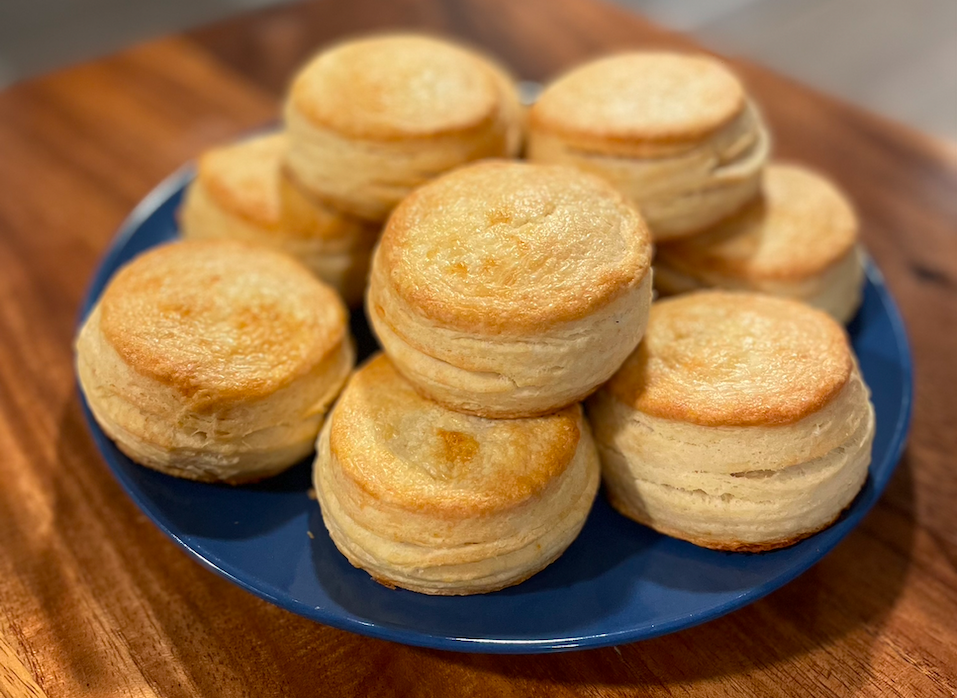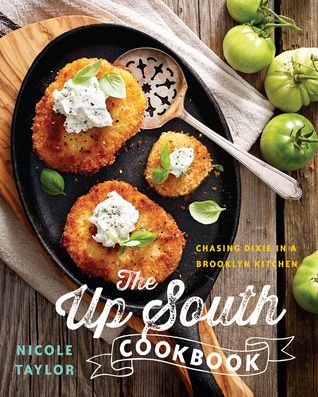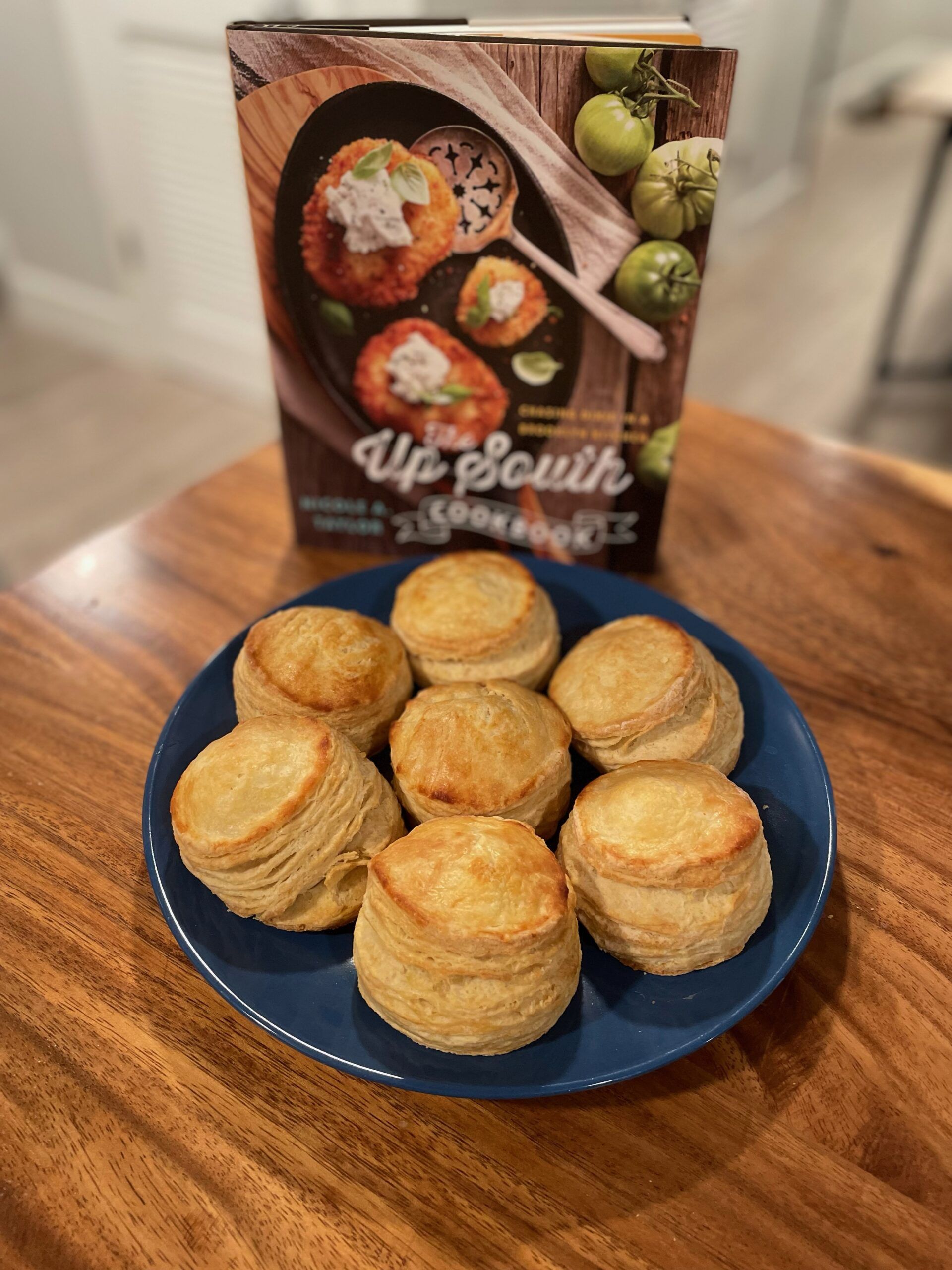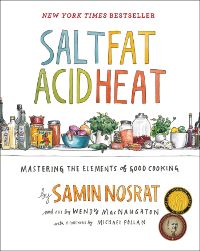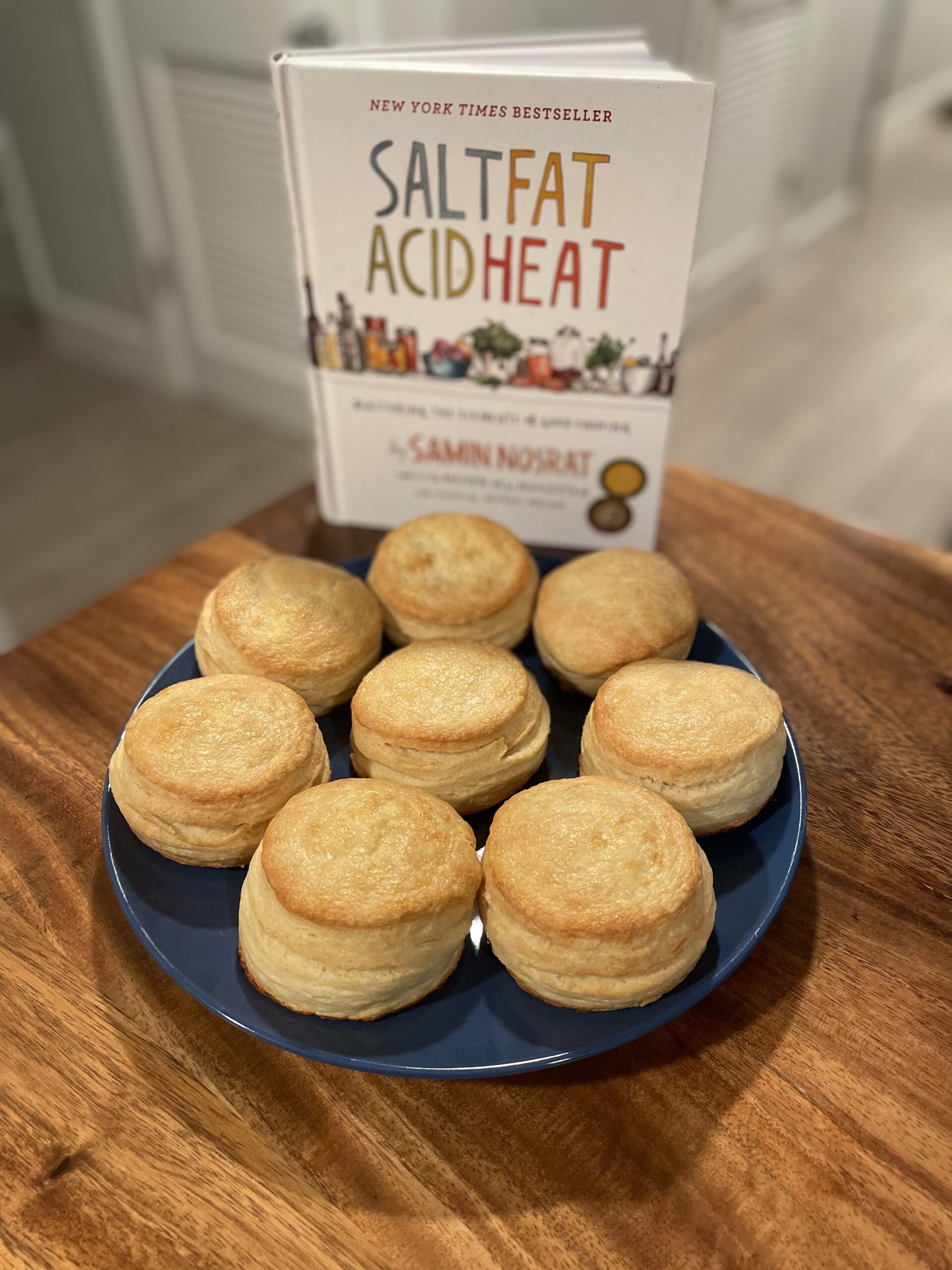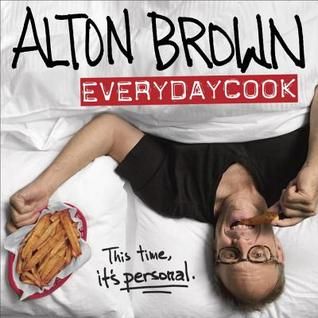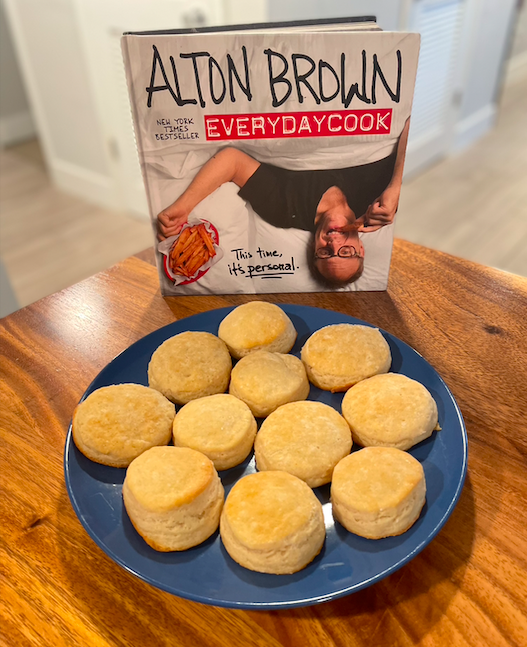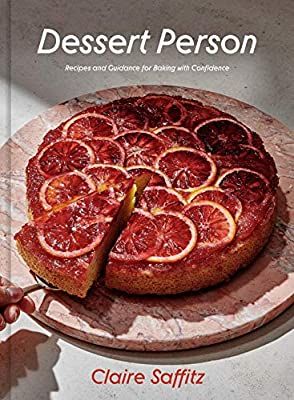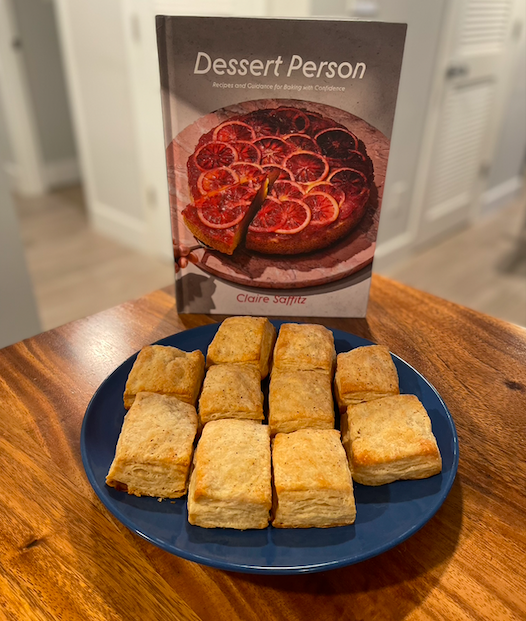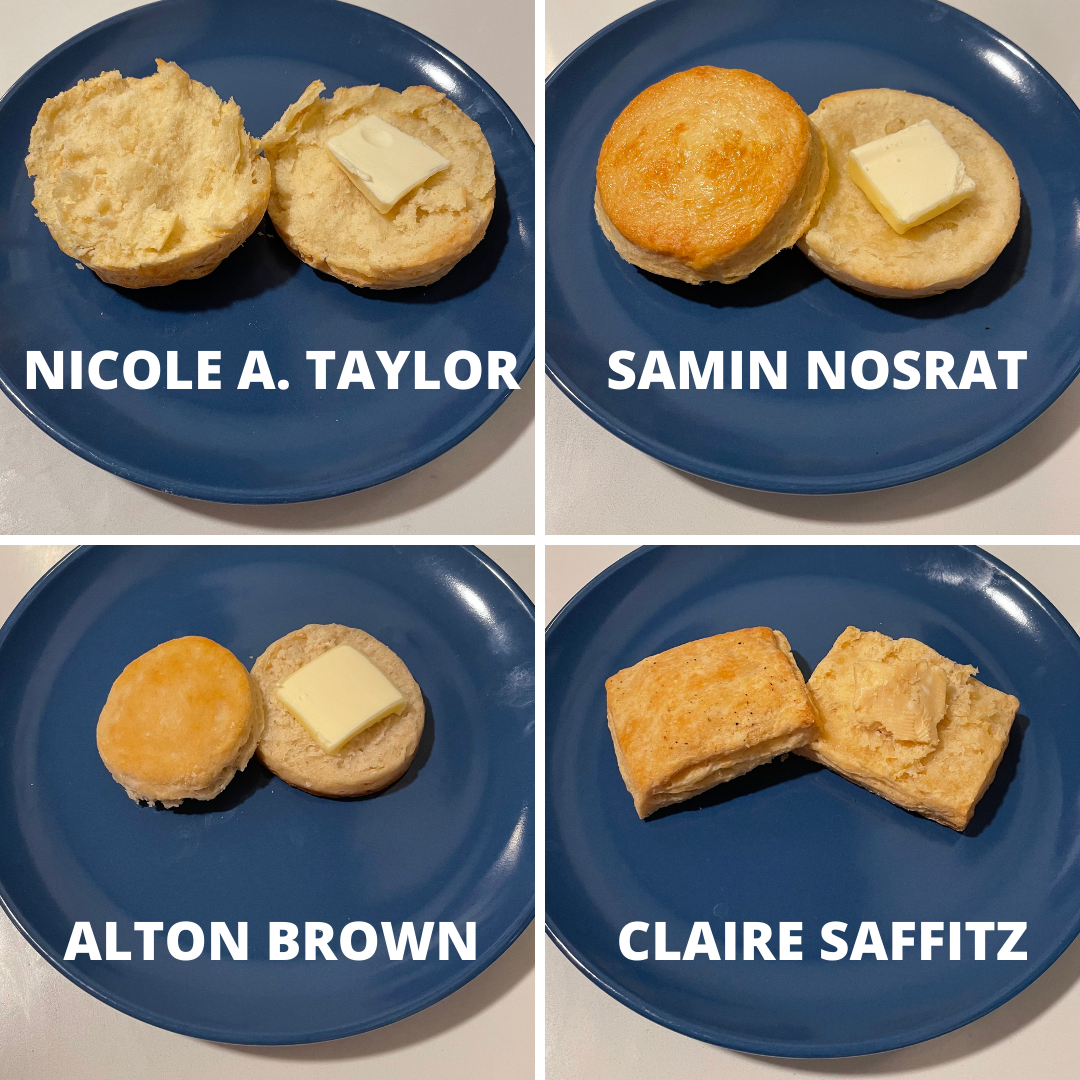Have you ever wondered why a “biscuit” is a hard, flat baked good in the U.K. and a light, fluffy bread in the U.S.? That’s partially due to the food’s long, winding history. Biscuits were created as a way to make a bread that was simple, storable, and longer lasting. Dry, hard biscuits last much longer than soft, fluffy breads. That’s why they were the food of choice in military meals ready to eat (MREs) for centuries. But while the British definition of a biscuit remained — a firm, dry baked good that Americans might call a cracker or cookie — the bread transformed into something new in the U.S. as flour mill technology improved. When flour became cheaper and more easily accessible in the early 19th century, particularly in the South, the American biscuit was born. It first arose as the beaten biscuit, requiring bakers to beat or knead air into the dough. But the rise of commercially available baking soda brought about the biscuits we know and love today.
How Buttermilk Biscuits Are Made
Biscuits are a quick bread, meaning they are made with baking soda or baking powder instead of yeast and don’t require extra time to rise. Recipes also typically call for flour, buttermilk, butter or lard, and salt. Thanks to simple ingredients and short preparation time, biscuits are a staple in American cooking, showing up alongside breakfast spreads, fried chicken, barbecue, and many Thanksgiving dinners. So how to achieve the perfect buttermilk biscuit? I’m talking mile-high, flaky layers, buttery flavor, crisp yet fluffy, golden brown biscuits. As someone who grew up in Arkansas and Oklahoma, I have very high standards for biscuits and a lot of experience making (and eating) them. While I’ve tried a handful of recipes, I have yet to find a favorite. In search of the dream biscuit, I tested recipes from Alton Brown, Samin Nosrat, Claire Saffitz, and Nicole A. Taylor. Read on to find out which biscuit rocked my gravy boat.
Cookbook Showdown: Buttermilk Biscuits
Taylor’s “Buttermilk Biscuits,” though, are classic through and through. The recipe calls for flour, baking powder, baking soda, butter, buttermilk, and salt. She recommends working quickly and keeping the dairy nice and cold. Here’s how these classic biscuits turned out.
Nicole A. Taylor’s “Buttermilk Biscuits”
Appearance: 4/5
I wanted to put these beautiful biscuits in my mouth the second they left the oven. The sky-high rise and defined layers did cause some of the biscuits to fall to the side while baking, but I don’t mind a bit of a crooked biscuit.
Taste: 3.5/5
Buttery, salty, delicious flavor? These biscuits had it for sure. The outside had a nice crunch and the inside was fluffy and light. The layers were gorgeous. My biggest criticism is that the biscuits were on the dry side, which meant they were quite crumbly and messy to eat.
Difficulty: Easy
This is a fantastic recipe for beginners, as it doesn’t require any special ingredients or tools. Taylor lays out the recipe clearly and concisely while still hitting all the important tips for good biscuits.
Overall: 4/5
Tasty and beautiful biscuits. If they’d risen straight up (which may have been a fault of my folding and rolling rather than the recipe) and been a bit more moist, it would have been a home run. Nosrat explains in the introduction to her “Light and Flaky Buttermilk Biscuits” recipe that it’s a bit unconventional. The ingredients are all very standard for biscuits — buttermilk, butter, flour, baking powder, salt, and heavy cream — but the technique is what stands out here. Conventional wisdom says to handle biscuit dough as little as possible, both to keep the butter intact (which creates steam in the oven and helps the biscuits rise) and to avoid overworking the flour (which builds more gluten and makes for a tougher biscuit). However, Nosrat’s recipe calls for completely incorporating half of the butter with a longer mixing time, then carefully incorporating the rest of the butter at the end to get those highly desired flaky layers. Here’s how it went.
Samin Nosrat’s “Light and Flaky Buttermilk Biscuits”
Appearance: 5/5
I mean, look at them! They’re gorgeous! Perfectly golden brown, well risen, and you can see the layers.
Taste: 4.5/5
Crisp on the outside, soft on the inside, light texture, and buttery flavor. What more could you ask for? My only note is the use of coarse kosher salt, which meant some bites had large flakes of salt while others had none. Next time, I would use sea salt instead, which would better distribute itself through the dough.
Difficulty: Easy
Fully incorporating the first half of the butter requires a stand mixer, which not every kitchen has, and a little extra time. But otherwise, it’s a very straight-forward recipe with great tips for beginning bakers.
Overall: 5/5
Samin Nosrat came through with an easy-to-follow recipe that led to a delicious, classic biscuit. The only question: Is it exciting enough to win best biscuit in this Cookbook Showdown? For this experiment, I made his “Little Brown Biscuits,” which Brown claims are his go-to everyday biscuits. The major difference between this recipe and the others I tried is the use of lard in place of butter. It took me several trips to various groceries to find lard, and I was still unable to find the specific kind of lard Brown calls for: leaf lard, made from the abdominal fat around pigs’ kidneys. Let’s see how these biscuits turned out.
Alton Brown’s “Little Brown Biscuits”
Appearance: 2/5
Sorry, Alton, but no one will fall in love with these biscuits based on looks alone. They hardly rose and had few visible layers, I’m guessing because the lard used in place of butter didn’t give them the same steamy lift as the other biscuits. And this was the only recipe that didn’t call for any kind of butter or cream brushed on top before baking, so they didn’t brown as beautifully as others either.
Taste: 2/5
As it turns out, I’m not a fan of the taste of lard, and it’s very present in these biscuits. They’re also pretty dense since they didn’t rise well. But after smothering them in gravy, they tasted just fine.
Difficulty: Advanced
Not only were the ingredients (leaf lard, whole wheat pastry flour) hard to find; it was also a moist, sticky dough, making it hard to roll out and cut.
Overall: 2/5
Lard-based biscuits aren’t for me. I’ll stick to butter and will never skip brushing the tops of biscuits with something to help them brown. But my love for Alton Brown isn’t diminished by his biscuits. To each his lardy own! Of course, Saffitz’s buttermilk biscuit recipe comes with a twist — miso paste. This Japanese seasoning is made from fermented soybeans and lends a salty, complex flavor to the biscuits. She also includes instructions to make miso butter. I used sweet white miso as recommended in the recipe, which has a more subtle taste than other varieties. Saffitz’s recipe calls for cutting the dough into squares rather than using a round cutter. Let’s take a look at how the “Miso Buttermilk Biscuits” turned out.
Claire Saffitz’s “Miso Buttermilk Biscuits”
Appearance: 3.5/5
I really loved the process of cutting the biscuit dough into squares instead of using a round cutter. It required a lot less re-rolling with the leftover dough. I didn’t take extreme measures to make them uniform in size, but I like the unconventional look of square biscuits. My critique here is that the biscuits didn’t rise as much as I’d like. I miss the towering layers.
Taste: 5/5
I never would have clocked miso as the mystery ingredient based on taste, but it added a subtle, savory flavor that worked really well. They were moist, flaky, and soft, and with the miso butter on top, I could not stop eating them.
Difficulty: Moderate
To be fair, this is still a pretty easy recipe in the realm of all baked goods. But the added challenge of incorporating miso and her technique for cutting and stacking the dough rather than folding makes this recipe a bit tougher than the others in this Cookbook Showdown.
Overall: 4.5/5
The flavor was a real standout, but the square shape and lack of rise made them a little less visually enticing than a sky-high round biscuit.
Tips for Better Biscuits
Before we get to the winner, I want to share a few tips I picked up from testing these recipes and general research for this piece:
Keep the butter as cold as possible: Pieces of butter in the biscuit dough cause bursts of steam in the oven, which helps the biscuits rise and creates beautiful layers. Keep the butter cold to keep it from melting into the dough. In fact, keep all of your ingredients and tools as cool as possible for best results. Use a sharp cutter and don’t twist: Use sharp round cutters for your biscuits, and press them straight down into the dough instead of twisting. This will help your biscuits rise with distinct layers. Don’t use something like a glass jar with a thicker edge, as this will press the dough down instead of cutting through it. If you don’t have round cutters, use a sharp knife to make square biscuits. Don’t let the dough sit before baking: Baking soda and baking powder start working as soon as they’re combined with a liquid in your dough, so the longer you wait after mixing the dough, the less active the rising agent will be in the oven. For tall, airy biscuits, work quickly and bake them as soon as they’re mixed and cut. Use bleached flour: Bleached flour uses bleaching agents to speed up the wheat’s aging process, which results in a finer-grain, softer flour. In the case of quick breads like biscuits, this makes for a lighter, fluffier finished product that typically rises more than those made with unbleached flour.
Alright, it’s time to announce the best biscuit of them all. Let’s take a look at the slice-by-slice:
And the winner is…
Samin Nosrat’s “Light and Flaky Buttermilk Biscuits” From Salt, Fat, Acid, Heat
No other recipe could beat the classic flavor, gorgeous look, and mile-high flaky layers of Samin Nosrat’s buttermilk biscuits. I’m still dreaming of them! This will be the recipe I return to time and time again for the perfect biscuits to pair with breakfast favorites, barbecue, fried chicken, and so much more. Thanks for joining us for another round of Cookbook Showdown to test the best buttermilk biscuit recipes! For more cooking inspiration, check out our other experiments:
Cookbook Showdown: Hummus Cookbook Showdown: Best Apple Pie Recipes Cookbook Showdown: Sourdough Recipes
